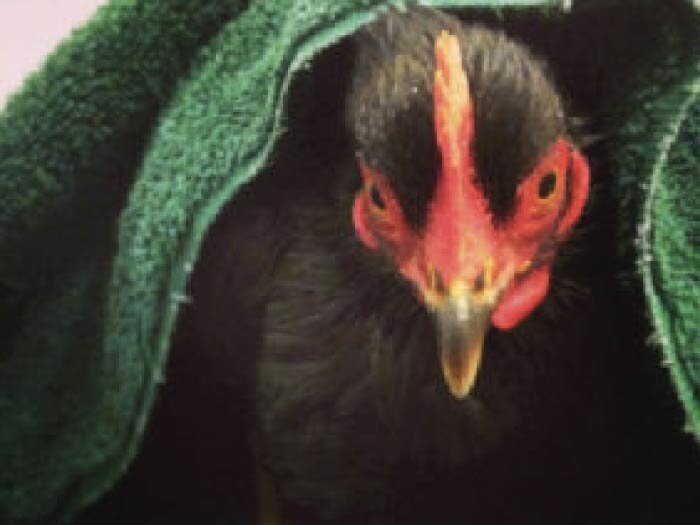BY: Julia Barnes
Everybody has their “thing”, their “niche”. There are those who are extreme sports fan and there are those who play on a sports team. There are those who write short stories or poems and there are those who are reading constantly. And then there are those who fall into that little category of “Poultry Enthusiasts”. I am one of those “Poultry Enthusiasts”, one of the many people that is fascinated with chickens and ducks and everything about them; breeding, raising, showing, buying, and selling. When I tell people that I show my ducks and chickens a lot of them give me weird looks. Most people never really consider that you can show a duck just like you can show a horse, a dog, or a lamb.
At a show, each bird is evaluated based on their breed and variety (aka “color”) standards. Now you can’t change a poorly colored bird or hide obvious flaws, but you do your best to “beautify” your bird before the show. Long term care such as clean housing, correct nutrition, and parasite control is the best way to keep your bird healthy and is the best way to improve your duck or chicken’s chance at doing well at a show. But there are other shorter term things you can do such as washing and final touchups that can your further enhance your bird’s appearance and presence in the show cage. I’m going to give you an overview of what I do to get my birds ready for a show.
Long Term Conditioning:
- Parasite Control: I treat my ducks and chickens differently. Chickens are a lot more vulnerable to parasites than ducks and require a lot more frequent treatment. I use Sevin dust for mite and lice prevention and Vaseline if I notice any signs of scaly leg caused by leg mites. Ducks rarely ever suffer from parasites so I never treat them unless there is a noticeable drop in production or they are losing weight.
- Nutrition: During breeding season and show season, I feed Game Bird Flight Conditioner by Purina Wildlife. It has 19% protein and promotes feather growth and prevents excess fat to help get birds in prime condition for show day. I also make sure they have daily access to fresh greens to bring out yellow pigment.
- Environment: Both chickens and ducks bathe themselves, but to keep themselves spotless they must have relatively clean housing to begin with. I keep my chickens in a raised coop bedded with pine chips with access to a large covered run. Whenever we have a lot of rain (which is often around here), I put straw in the run to keep the mud down. I clean the coop monthly, and more often during show season. Ducks are notoriously messy, much more so than chickens. A clean water source that they can bathe in is the most important thing when conditioning ducks. Without bathing they have a harder time waterproofing themselves and are more likely to get dirty. My ducks have makeshift “pools” made from rubber feed pans that they bathe in. To keep the pen itself clean, I keep my ducks on a three inch layer of smooth river stones that I hose down weekly.
- Feather/Nail/Beak Care: Six to twelve weeks before a show I pick out any broken, ripped, or damaged feathers I see. Feathers take six to eight weeks to fully grow back in, so it is important to pick feathers in this time frame. A few weeks before the show I clip toe nails and beaks using a pair of regular old nail clippers. A lot of people do it a couple days before the show, but clipping them earlier gives them time to grow out for a more natural look that a lot of judges like.
- Bathing: Three to four days before the show, I bathe my chickens to get any dirt, poop, and bugs off. I don’t use anything fancy just buckets of warm water and dish soap. If their legs are extra dirty, I’ll use an old toothbrush to get under their scales. After the bath I pat them dry with a towel and blow dry them for about 30 minutes before setting them under a heat lamp in a clean brooder pen. I make sure to bath at least two days before the show so that the chickens can put their feathers back in place, fluff up, and natural oils come back in (There are more details about bathing chickens, but I’ll go over that in another blog post) I don’t, however, bathe my ducks. As I said above, given the right environment they keep themselves sparkling!
- Transport: I use plastic small animal carriers and cardboard boxes to transport chickens and large plastic well ventilated totes to transport ducks. It’s important to use carriers that are clean, roomy and don’t have any bars or wire that will ruin feathers. A good layer of pine chips in each carrier will prevent the newly washed birds from ruining all my hard work.
Orders
Services
About
Your Wilco Store
Store Hours
Monday to Saturday:
8 a.m. to 8 p.m.
Sunday: 9 a.m. to 6 p.m.
Need Help?
For questions or help with online orders call: (888) 78-WILCO
Limited to stock on hand. Some items may vary from photos. Because of store size limitations or geography, some items featured may not be available in all stores but will be made available by special order during sale periods at advertised prices. All sale prices listed as “dollars off” or “% off” are discounted from our regular posted shelf price, not from discounts given with specialty, bulk or pallet pricing. Reseller and Drop-shippers must contact us for pre-approval to place orders with the intent to re-distribute.
© 2025, Wilco Farm Store
